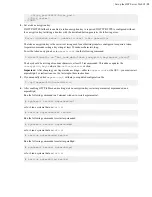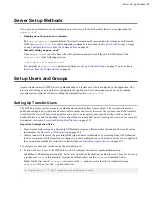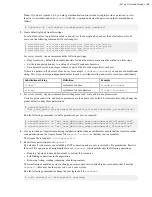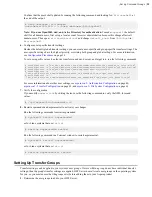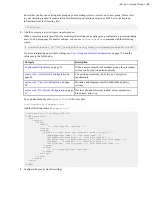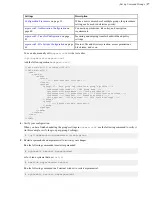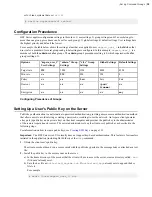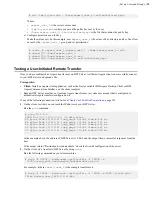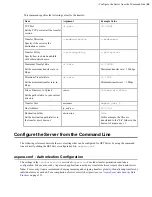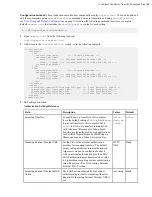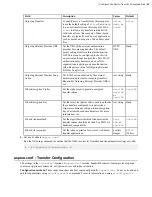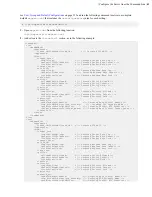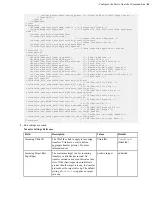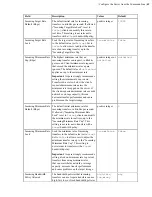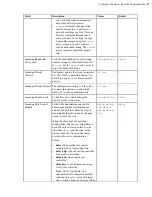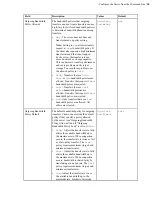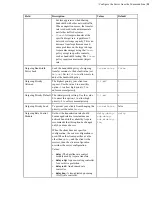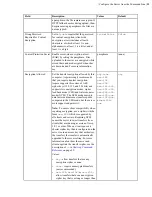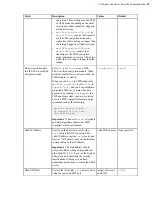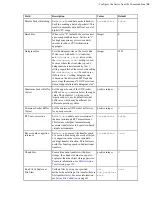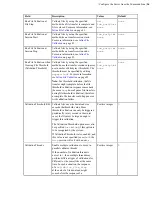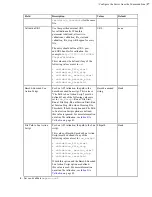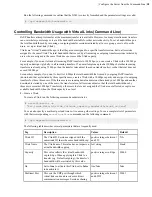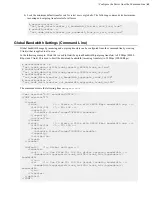
| Configure the Server from the Command Line |
46
Field
Description
Values
Default
to determine bandwidth allocation among
transfers.
•
any
- The server does not deny any
transfer based on policy setting.
Note:
Setting to
any
allows clients to
request a
fixed
bandwidth policy. If
the client also requests a high minimum
transfer rate and that is not capped
by the server, the transfer rate can
exceed network or storage capacity.
This can decrease transfer performance
and cause problems on the target
storage. To avoid these problems, set
the allowed policy to
fair
.
•
high
- Transfers that use
high
,
fair
, or
low
bandwidth policies are
allowed. Transfers that request
fixed
bandwidth policy are rejected.
•
fair
- Transfers that use
fair
or
low
bandwidth policies are
allowed. Transfers that request
fixed
bandwidth policy are rejected.
•
low
- Only transfers that use a
low
bandwidth policy are allowed. All
others are rejected.
Incoming Bandwidth
Policy Default
The default bandwidth policy for incoming
transfers. Clients can override the default
policy if they specify a policy allowed
by the server (see "Incoming Bandwidth
Policy Allowed") and if "Incoming
Bandwidth Policy Lock" is set to
false
.
•
high
- Adjust the transfer rate to fully
utilize the available bandwidth up to
the maximum rate. When congestion
occurs, the transfer rate is twice as fast
as a fair-policy transfer. The
high
policy requires maximum (target) and
minimum transfer rates.
•
fair
- Adjust the transfer rate to fully
utilize the available bandwidth up to
the maximum rate. When congestion
occurs, bandwidth is shared fairly by
transferring at an even rate. The
fair
policy requires maximum (target) and
minimum transfer rates.
•
low
- Adjust the transfer rate to use
the available bandwidth up to the
maximum rate. Similar to fair mode,
but less aggressive when sharing
bandwidth with other network traffic.
When congestion occurs, the transfer
high
,
fair
,
low
,
fixed
fair

